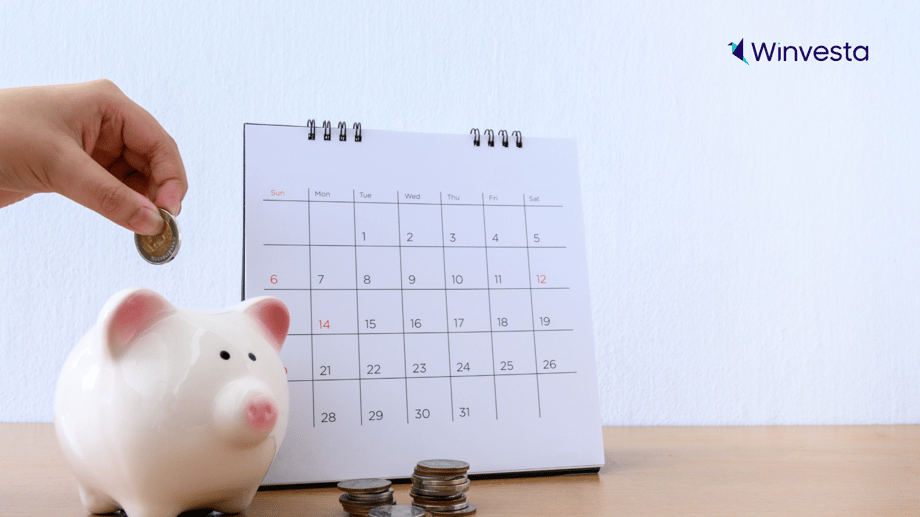Contents
Payment schedule guide for businesses and freelancers
6 minutes read
14 May 2025

Managing money flow is key for any business or freelancer. A good payment schedule helps you keep track of money coming in and going out. This makes sure payments happen on time and keeps your finances healthy. This guide will tell you everything you need to know about payment schedules, the different types, and how to make one that works for you.
What is a payment schedule?
A payment schedule is a plan that shows when payments should happen, how much each payment is, and who gets or makes these payments. This tool helps businesses and freelancers organize their payment days and keep steady cash flow.
For businesses, a payment schedule keeps track of client payment deadlines, when to pay vendors, employee salary payments, and regular expenses like subscriptions.
For freelancers, a payment schedule usually covers when clients will pay for project milestones, when to pay taxes, business costs, and service fees.
Why payment schedules matter
Making and keeping a payment schedule gives you many benefits:
1. Better money management
A payment schedule shows you clearly when money comes in and goes out of your account. This helps you plan your business activities based on how much money you have.
2. Stronger client relationships
When clients know exactly when they need to pay, there are fewer mix-ups. Clear payment terms set the right expectations from the start of working together.
3. Fewer late payments
With a well-organized payment list, you can send reminders before due dates. This helps reduce late payments from clients or customers.
4. Easier accounting
A payment schedule makes accounting simpler by creating an organized record of all money movements. This makes tax time and financial reviews much easier.
5. Smarter financial planning
When you know exactly when payments will happen, you can make better decisions about spending money, hiring people, or growing your business.
Types of schedules for payments
Different payment needs call for different types of schedules. Here are the most common schedule types used by businesses and freelancers:
1. Fixed payment schedule
This is the simplest type where payments happen on set dates for set amounts. Some examples are monthly subscriptions, rent payments, insurance costs, and loan payments. Fixed schedules make budgeting easier for everyone involved.
2. Milestone-based payment schedule
This type links payments to project stages rather than calendar dates. It works well for project-based work like building websites, construction jobs, content creation, or consulting work.
For instance, a website project might be paid like this: 30% when the project starts, 30% after the design is approved, and 40% when the project is finished.
3. Instalment payment schedule
This breaks a big payment into smaller, more manageable amounts paid over time. People often use instalment schedules when buying equipment, ordering large amounts of stock, paying for training programs, or funding marketing campaigns.
4. Recurring payment schedule
Used for ongoing services that bill regularly, a recurring schedule makes payments happen automatically at set times. This includes software subscriptions, maintenance services, retainer agreements, and membership fees.
5. Variable payment schedule
Some business relationships need flexibility in when and how much to pay. Variable schedules work well when payments change based on seasonal business, usage-based pricing, performance-linked pay, or commission structures.
How to create an effective payment schedule
Creating a payment schedule takes thoughtful planning and clear communication. Follow these steps to make a schedule that works for everyone:
1. Know your cash flow needs
Before making a payment schedule, look at how money typically flows through your business. Think about your fixed monthly costs, changing expenses, how money comes in, and how much cash you need to keep on hand. This helps you pick the best payment days that match when you need money.
2. Pick the right schedule type
Based on your business relationship, choose the most fitting schedule type from the ones we talked about. Think about which structure creates the best balance of risk and ease for both sides.
3. Set clear payment terms
Spell out all payment details to avoid confusion. Include payment amounts, due dates, and ways to pay. Also mention what happens if payments are late, if there are rewards for early payment, and which currency to use.
4. Write down the schedule
Create a formal document that clearly shows the agreed payment terms. This document should identify everyone involved and detail what products or services are covered. It should also list the total contract value and each payment amount with its due date. Don't forget to include contact information for billing questions.
5. Create a tracking system
Set up a way to monitor if payments are being made as planned. You could use accounting software with payment tracking features or set up calendar reminders for payment days. Automated invoicing systems and payment dashboards can also help keep things organised.
6. Talk with everyone involved
Share the final payment schedule with all parties. Go over the terms together to make sure everyone understands and address any questions before starting work.
Payment schedule tools and templates
Several tools can help you create and manage payment schedules. Digital tools like QuickBooks, Xero, or FreshBooks can track payments. Project management tools often include features for payment milestones. There are also apps made just for scheduling payments, and you can create spreadsheet templates in Excel or Google Sheets.
When choosing a tool, look for features like automatic payment reminders and connections to your banking system. A good tool will show upcoming payments on a dashboard, offer customizable schedule templates, and track payment status.
Common challenges with payment schedules
Even with careful planning, payment schedules can run into problems:
1. Late payments
Despite clear schedules, clients might still miss payment deadlines. You can address this by sending friendly reminders before due dates. Some businesses charge fees for late payments or offer many convenient ways to pay. When possible, try to automate payment collection.
2. Changing project scopes
For project-based schedules, changes in the work can disrupt payment timing. Protect yourself by creating a process for handling changes that adjust payment terms. Keep some extra cash on hand for unexpected delays, and clearly communicate how changes affect when payments happen.
3. Cash flow gaps
Sometimes payment days don't line up perfectly with when you need to pay your own bills. To manage these gaps, keep enough cash in reserve and arrange flexible credit lines if needed. You might also negotiate payment timing with vendors or offer discounts to clients who pay early.
4. Managing multiple schedules
As your business grows, keeping track of many payment schedules gets complex. Stay organized by using one central system to track all payments. Add payment dates to your calendar and review your schedules regularly. You might even assign team members to monitor payments as your business gets bigger.
Payment schedule best practices
Follow these tips to get the most from your payment schedules.
For businesses, try to align payment schedules with when you pay your own bills. Process payments on specific days for better efficiency, and create standard payment terms for similar clients. Every few months, review your payment schedules to find ways to improve them. Always write down any changes to the schedule.
For freelancers, try to get more money upfront when possible. Ask for deposits from new clients, and link payments to when clients approve your work rather than just calendar dates. Create payment schedule templates for projects you do often, and include payment terms in your welcome documents for new clients.
Payment schedules for international clients
When creating payment schedules for international clients or vendors, you need to think about a few extra things:
Currency changes
International exchange rates can change the value of scheduled payments. To handle this, clearly state which currency the payment should be in. For long-term contracts, you might want to add provisions about exchange rates. Some businesses use financial tools to lock in exchange rates for future payments.
Transfer times
International payments often take longer to process than local ones. To account for this, set earlier deadlines for international payments and specify who pays transfer fees. Choose payment methods that take the least time to process.
Following regulations
Different countries have different rules about payments. Make sure your schedule follows anti-money laundering regulations and tax requirements. Be aware of currency control restrictions and banking system limitations in the countries you work with.
Frequently asked questions about payment schedules

For instance, a $10,000 website project might be paid like this: $3,000 paid before work starts, $3,000 paid when design mockups are approved, and the final $4,000 paid when the project is finished and launched.
Each payment is tied to finishing a specific part of the project rather than to calendar dates. This way, both parties share the project risk fairly.
In accounting, a payment schedule is a plan for tracking when money comes in from clients and when you need to pay vendors or service providers.
Accounting systems use payment schedules to create reports, predict cash flow, and send payment reminders automatically. Payment schedules also help create accurate financial statements by recording revenue and expenses in the right time periods.
A scheduled payment in banking is when you tell your bank to automatically transfer a certain amount of money on set payment days. This can be set up as a one-time future payment or as recurring payments at regular times (weekly, monthly, quarterly, etc.).
Most modern banks offer this feature through their online or mobile banking services. This lets you automate bill payments, transfer money between accounts, or send payments to vendors without having to do each transaction manually.
.png?width=1772&height=364&name=Testimonial%20Card%20-%20Murad%20Currawalla%20(1).png)

Contributed by Denila Lobo
Denila is a content writer at Winvesta. She crafts clear, concise content on international payments, helping freelancers and businesses easily navigate global financial solutions.



